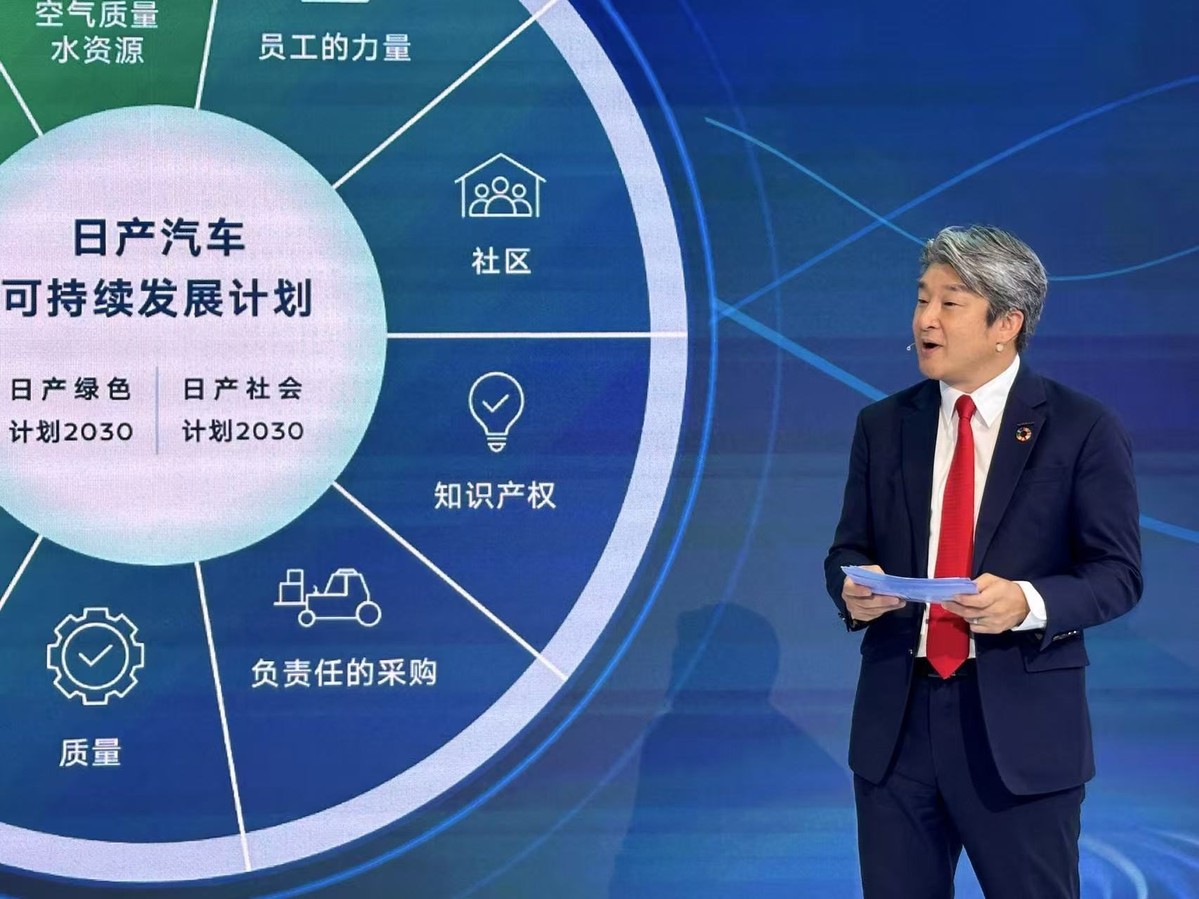
Isao Sekiguchi, Nissan’s corporate vice-president, delivers a speech at the CIIE on Nov 6, 2024. [Photo by Li Fusheng/chinadaily.com.cn]
With China’s evolving market trends, Nissan is accelerating its electrification efforts, planning to launch eight new energy models, including five under the Nissan brand, by fiscal year 2026 to meet diverse consumer needs.
Isao Sekiguchi, Nissan’s corporate vice-president, emphasized the plan at the ongoing China International Import Expo on Wednesday.
The Japanese carmaker is displaying a range of models at the CIIE, including two electric concept cars, a robotaxi, and a six-seater flagship SUV, demonstrating its vision of “driving innovation to enrich people’s lives”.
Notably, Nissan has been a trailblazer among foreign automakers in China’s autonomous driving sector.
Its autonomous taxi fleet has covered over 140,000 kilometers in pilot operations in Suzhou, Jiangsu province, showcasing Nissan’s dedication in this field.
Sekiguchi, who has been in China for just six months, said he is impressed with the government’s support in terms of smart city infrastructure.
He added that the close cooperation between the carmakers, technology companies and governments is making China a unique and attractive market.
Nissan has also highlighted its sustainable practices at the CIIE.
Through close partnerships with 540 automotive parts suppliers in China, the carmaker has been advancing green export initiatives, including recyclable packaging, low-carbon transportation, and electrification facilities.
These efforts reduce CO2 emissions in China by over 12,000 tons annually, said Sekiguchi.
In a new collaboration with Tsinghua University, Nissan will launch a Vehicle-to-Everything energy management pilot project in Shanghai next year, aimed at improving energy reuse and supporting a low-carbon future.
Nissan said it will continue enhancing its localized product lineup, deepen electrification efforts, and expand partnerships to support sustainable development in China, contributing to a greener and more innovative future for the auto industry.
